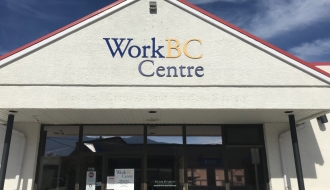Career Overview
Photographic and film processors work for film processing laboratories and retail photofinishing establishments and perform a variety of tasks.
People in this occupation:
- Process and finish still photographic film and motion picture film
Job Titles
Duties
Photographic and film processors perform some or all of the following duties:
- Control equipment to develop film and to print black and white and colour photographs
- Operate photographic enlarging equipment to produce prints and enlarged photographs from negatives
- Run equipment to develop motion picture film
- Tend automatic equipment in retail establishments to develop colour negatives, prints and slides
- Run equipment to transfer film to video tape
- Retouch photographic negatives or original prints to correct defects
- Splice film and mount film on reels
- Measure and mix chemicals for processing
- Inspect rolls of photographic prints to ensure that they meet specifications
- Check motion picture film for defects in developing and printing
Earnings
Earnings is income that workers receive in exchange for their labour. Depending on the type of employment, earnings can be in the form of wages (hourly), salaries (fixed monthly or annual) or self-employed earnings.
Work Environment
# Workers Employed
340% Employed Full Time
37%Key aspects of work in this occupation:
- Photographic and film processors usually work in a conventional controlled environment such as an office, hospital or school
- Work may involve chemicals that are harmful to skin or eyes, dangerous if inhaled or may cause a fire or explosion
Career Pathways
- There is mobility among occupations within laboratory processing operations
- Progression is possible from automatic machine tenders in retail establishments to laboratory processing occupations
Related Careers
Occupational Interests
It’s important to understand what kinds of occupations align with your interests.
For more about occupational interests visit Skills for the Future Workforce > Characteristics.
Here are the top occupational interest(s) for this career profile:
Education, Training and Skills
- Completion of secondary school is usually required
- For employment in film processing laboratories, completion of a college or other specialized photography program or Extensive related experience is required
- For employment as a film printing machine operator in retail outlets, on-the-job training is provided
Education programs in B.C.
The following program areas are related to this occupation:
- Academic/Basic Upgrading

Skills
Every job calls for a certain set of skills. Knowing those skills is the first step in finding a good career fit.
Here, you will find the 10 most relevant workplace skills. Some are more important to achieving success in a certain career than others. These skills may come naturally to you or you may need to gain them through education, training and experience.
See the list of work-related skills below, ranked in order of importance for this career. Check out the list and see if this career matches your skills—take that first step!
Watching gauges, dials or other indicators to make sure that a machine is working properly.
Giving full attention to what other people are saying, taking time to understand the points being made, asking questions as appropriate, and not interrupting at inappropriate times.
Conducting tests and inspections of products, services or processes to evaluate quality or performance.
Labour Market Statistics
Discover data, facts and information that have been gathered and analyzed. Learn about the characteristics of the economy and labour market in B.C.
Employment
Find out about employment types and trends by region and industry.
Employment
340Employment by Region







| Region | Employment | % Employment of this Occupation |
|---|---|---|
| Cariboo | 0 | 0.0% |
| Kootenay | 0 | 0.0% |
| Mainland/Southwest | 240 | 70.6% |
| North Coast and Nechako | 0 | 0.0% |
| Northeast | 0 | 0.0% |
| Thompson-Okanagan | 40 | 11.8% |
| Vancouver Island/Coast | 45 | 13.2% |
Labour Market Outlook
The B.C. Labour Market Outlook is a 10-year forecast of the expected supply and demand for labour in the province. It’s usually updated every year. The purpose is to provide British Columbians with the knowledge to make informed decisions on careers, skills training, education and hiring.
Forecasted Job Openings (2024-2034)
150Forecasted Job Openings
Forecasted Employment Growth Rate
Composition of Job Openings
Job Openings by Region (2024-2034)







| Region | Job Openings | Avg. Annual Employment Growth |
|---|---|---|
| Cariboo | Not available | Not available |
| Kootenay | Not available | Not available |
| Mainland/Southwest | 130 | 1.9% |
| North Coast and Nechako | Not available | Not available |
| Northeast | Not available | Not available |
| Thompson-Okanagan | 10 | 0.8% |
| Vancouver Island/Coast | 20 | 0.7% |
Industry Highlights
Learn about the opportunities in B.C.'s major industries, including employment trends, earning potential, locations of work and more.
Forecasted Job Openings by Industry
| Industry | Job Openings (2024-2034) |
|---|---|
| Retail Trade | 90 |
| Professional, Scientific and Technical Services | 30 |
| Repair, Personal and Non-Profit Services | 20 |
| Information, Culture and Recreation | 10 |
| Manufacturing | 10 |
Resources
Resource information is currently not available.







